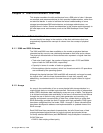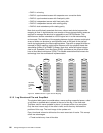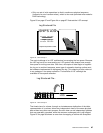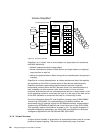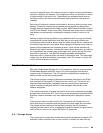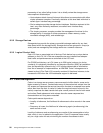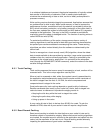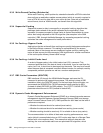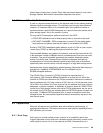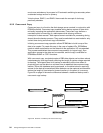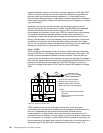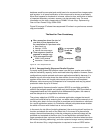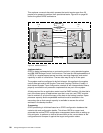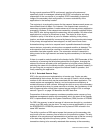92 Storage Management with DB2 for OS/390
9.3.3 Write Record Caching (Quickwrite)
Write record caching, called quickwrite, extends the benefits of DFW to data that
does not have a read-before-update access pattern (which is currently required to
have a DFW hit) and for data with a poor cache hit rate. Data with a predictable
record format, such as VSAM records, can benefit from this algorithm.
9.3.4 Sequential Caching
Sequential access to data is managed by a sequential caching algorithm that
prestages tracks ahead of the record requested by the application. Once
accessed, the space occupied by those tracks is marked as available for reuse
rather than being subjected to the LRU algorithm (the exception is the 3990
controller). DB2, through the Media Manager, by requesting sequential caching,
optimizes the cache management for better performance.
9.3.5 No Caching—Bypass Cache
Applications that do not benefit from caching can specify the bypass cache option
in the Define Extent command. This setting is accomplished by the access
methods. Most of the storage servers implement bypass cache by caching the
tracks of data anyway, but also managing LRU algorithms for a faster reutilization
of the cache space memory those tracks occupy.
9.3.6 No Caching—Inhibit Cache Load
A variant of bypass cache is the inhibit cache load (ICL) command. This
command specifies that if the data is found in the cache, it can be read from the
cache, but if not, it should not to be staged into the cache. This may be of benefit
when the same data is accessed in several different modes, for example, read by
a sequential prefetch operation as well as a random read operation.
9.3.7 DB2 Cache Parameters (DSNTIPE)
DB2 interfaces I/O through the VSAM Media Manager and uses the ICL
command to optimize the sequential processes. The setting is done at DB2
installation time in the DSNTIPE panel. For the best large cache utilization, we
recommend the SEQUENTIAL CACHE parameter being specified to SEQ
(instead of default BYPASS) for DB2 prefetch. The UTILITY CACHE OPTION
parameter should be set to YES (instead of default NO).
9.3.8 Dynamic Cache Management Enhancement
Dynamic Cache Management Enhanced (DCME) is an interactive cache resource
management algorithm between System Managed Storage (SMS) and storage
server Licenced Internal Code (LIC). SMS specifies for each data set the level of
performance required:
• Whether the data set should be cached (must cache)
• Whether the data set should be excluded from caching (never cache)
• Whether caching should be used only if it is suitable to do so (may cache)
The recommendation is to define all data sets requiring performance as
must
cache
(which is accomplished when an ACS routine sets them in a Storage Class
defined with a low response time). This means that while all data sets use
caching, the
must cache data sets have an optimized LRU algorithm, which




